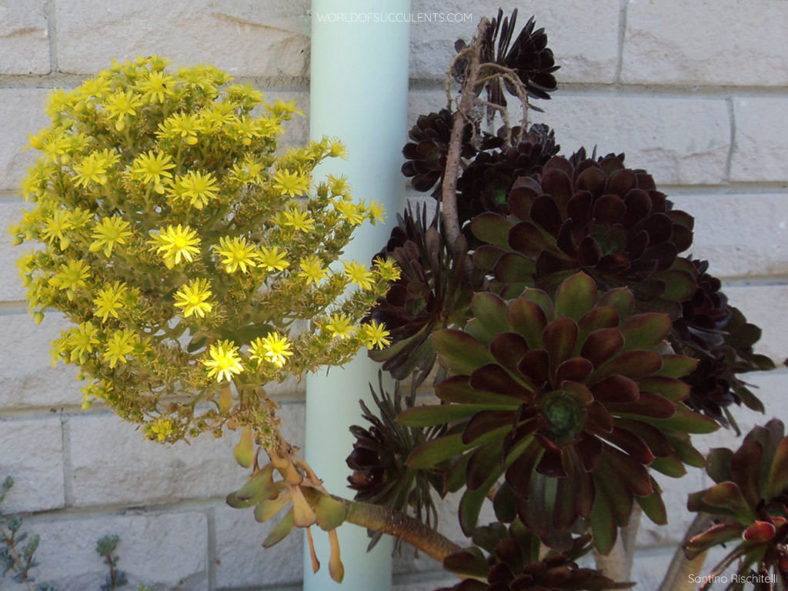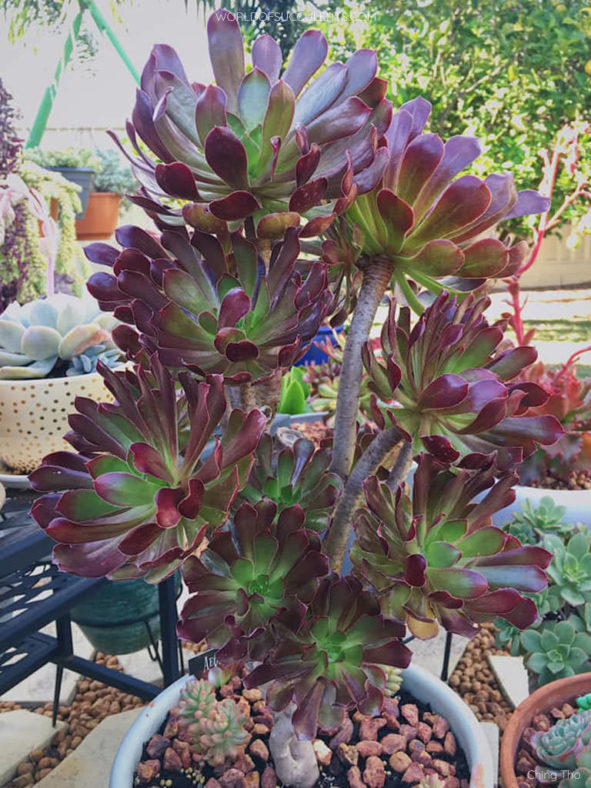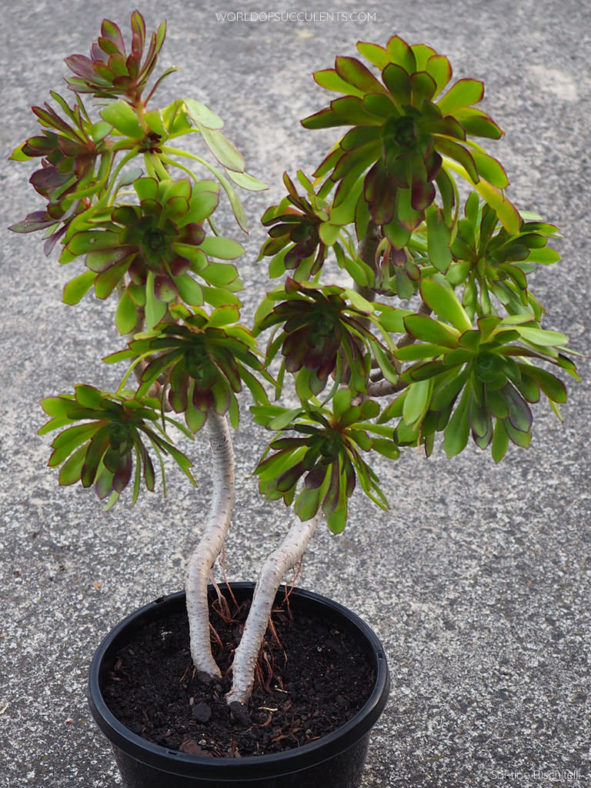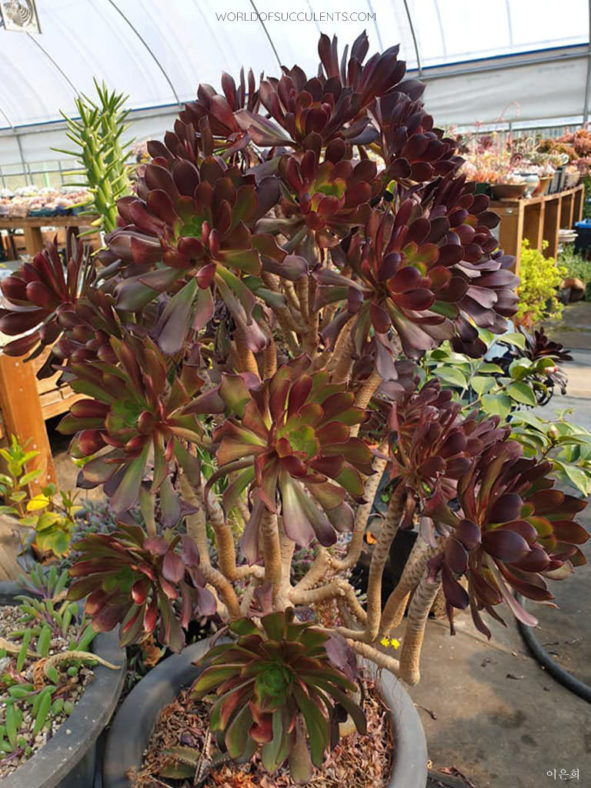Scientific Name
Aeonium arboreum 'Atropurpureum'
Common Name(s)
Dark Purple Houseleek Tree, Purple Aeonium, Purple Rose, Purple Rose Tree
Synonym(s)
Aeonium arboreum var. atropurpureum, Aeonium 'Atropurpureum', Sempervivum arboreum var. atropurpureum, Aeonium 'Atropurpureum', Sempervivum mutabile
Scientific Classification
Family: Crassulaceae
Subfamily: Sempervivoideae
Tribe: Aeonieae
Genus: Aeonium
Origin
Aeonium arboreum 'Atropurpureum' is a cultivar of Aeonium arboreum introduced and described by Dr. B. K. Boom in the Dutch journal Succulenta in 1959.
Description
Aeonium arboreum 'Atropurpureum' is a much-branched succulent that forms striking rosettes of colorful leaves at the ends of the branches. It grows up to 3 feet (90 cm) tall. The leaves change color through the seasons from reddish-green to deep reddish-purple.
The bright yellow, star-shaped flowers appear in large pyramidal panicles in late spring.

Hardiness
USDA hardiness zones 9b to 11b: from 25 °F (−3.9 °C) to 50 °F (+10 °C).
How to Grow and Care
Tree Aeonium grows best in full sun during the cooler months and in coastal areas. When grown inland or during the summer, provide this succulent with afternoon or partial shade. Avoid placing Tree Aeoniums in sites with western sun exposures.
Though Tree Aeoniums tolerate various soil types, they prefer light, porous soil as long as they're well-drained. You may want to amend your planting site with sand and limestone chips. For container gardening, plant Tree Aeonium in a moderately moist medium with excellent drainage.
This drought-tolerant plant hates water around its roots, so avoid excessive watering. In the wild, these succulents go dormant in summer, so water sparingly during the hotter months, allowing plants to dry out between waterings. In the winter, reduce watering to once per month.
Learn more at How to Grow and Care for Aeonium.
Forms
Links
- Back to genus Aeonium
- Succupedia: Browse succulents by Scientific Name, Common Name, Genus, Family, USDA Hardiness Zone, Origin, or cacti by Genus
Photo Gallery
Click on a photo to see a larger version.


